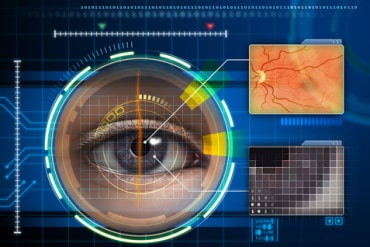
Business bots will soon become a major customer communication channel.
The AI (artificial intelligence) chatbot term has been around for a long time but has recently gained acceptance and popularity. It is an advanced automated chat system with knowledge of a thousand or more words, and that combines memories and feelings. It also has the aptitude of sentence structure.
What exactly is a chatbot?
A chatbot mimics human conversation. It communicates with users via instant messaging, repeating non-human communication patterns. A chatbot is also known as chatbox or talkbot. This artificial chat business is used as a cooperative agent that can conduct conversations with text or audio channels. Often, programs are designed to simulate the behavior of people during a conversation. In practice, this means that the chatbot system will have a sequence of responses recorded before it communicates with people.
See also: How AI-powered Chatbots Enhance Customer Engagement
For example, consider a company that makes violins. People often try to find the best violin for themselves on your website. Instead of offering support from employees, you use a chatbot. The chatbot begins to interact when someone visits your site. It reads the viewer’s questions and uses pre-planned answers to respond to them. Instead of communicating with someone else, your customer receives feedback from an automated system. It is more organized, faster, and promptly accessible.
Chatbots can answer the questions and interact by using AI (artificial intelligence). The conversation can understand language and commands as well.
Chatbot technology
In describing the current state of chatbot technology today, it is helpful to establish common terms:
1) Rule-based chatbots can only respond to specific commands. However, these conversations follow the flow of the direct discussion, depending on a decisive tree. The chatbot provides simple answers. It can also answer based on specific keywords.
Defined rules can be very simple or complex. The chatbot is limited to its capabilities and uses a document retrieval system. Such chatbots do not answer free form questions, where the sample may not match. This is also known as the Decision Tree Chatbot, where the branches indicate the options available to the user.
2) AI-assisted chatbots can learn from end-users via the interactions they have. This is somewhat made possible by NLP (natural language processing), which allows chatbots to intelligently respond to user text input by understanding the purpose and context. When building AI-assisted chatbots, it is important to test and improve the technology regularly.
How do chatbots work?
There are three main types of conversations that identify the client’s needs and help him or her as well as possible. However, while all three work in different ways, they all have the same purpose. The three types include:
- Tree-based chatbot: The decision to follow the flow map in response to user requests is arranged in advance with a tree-based chatbot. The structure may be intricate or simple, dependent on the company’s designs and platform. This type of chatbot often uses a button or menu to interconnect with the client.
- Contextual chatbot: This type of chatbot offers free-flowing conversations and can often learn from the conversations. They are usually loose and open for topic deviation but can also follow mapped conversation streams. To make an informed decision, each chatbot uses AI and natural language assists. However, some chatbots are “more intelligent” than others. All of these are based on the chatbot’s internal knowledge base and programming.
- Keyword recognition-based chatbot: The decisions in these chatbots work similarly to trees but are programmed to identify certain keywords. The chatbot makes decisions and gives answers based on the intuition of the keywords.
Businesses are using chatbots based on these technology approaches in a variety of applications today. Some of the applications include:
- The Q/A-based bots have complex codes with limited functionality and power on the base of a manual decision tree. Examples include a chat-based chatbot, Wiki-Chatbot.
- Email bots pump emails directly to chat rooms and send emails from within chat rooms. Such bots often are used to keep the sales team up to date with the newest documents among several accounts.
- Intelligent bots, also known as the conversational bots, work on a generative-based model using NLP and AI-based learning to simulate human-based feedback. Such bots learn from each conversation, create patterns, add variety, understand the tones of various discussions, and provide intelligent feedback to the user. Examples of these bots include Siri, Google Assistant, and Alexa.
- Price bots mark the stock and get a price rating. They get the required information without leaving the conversation.
- Social bots merge chat rooms into selected social media content (Twitter, RSS feeds, etc.). They are used when a person is looking for social media activities or competing topics in a field.
Simple bots vs. AI chatbots
Chatbots are divided into two types: those that use the default rules and those that are powered by artificial intelligence, through a system called machine learning.
Advanced AI chatbots can answer a wide variety of questions and learn through their interactions with humans. Consider a situation where this AI (Artificial intelligence) is more involved in social interaction, and it becomes more sensitive.
Based on NLP (natural language analysis) and ML (machine learning), these advanced bots can understand the language in complex situations. By mimicking human conversations, AI conversations can engage in natural interactions with users.
The benefits of chatbots
The benefits of using Chatbot is understandable. You do not have to pay staff to participate in customer service. It is important to use chatbots because today, many people prefer to use messenger apps than social networks.
Other benefits of using chatbots are:
- Bots are easy to build and run. We can create a Facebook Messenger bot in less than half an hour. Of course, this is not the most complicated ever made, but it does the job done. Even the simplest chatbot can be feasible and useful.
- Bots give simple answers to common questions. Most people want a quick and simple answer to a small question. Consequently, people can get their answers instantly and be on their way, instead of searching a database or talking to a person.
- Bots always put your best foot forward. While the bot connection is being retrieved, your product image is always displayed in a good light. The chatbot does not anger or insult anybody.
Moreover, chatbots are available 24/7, and customers can chat from anywhere in the world and get prompt responses. Chatbots eliminate the wait for an answer and can provide immediate service when human agents are busy or on break. Essentially, chatbots are virtual help desks, which are smart and intelligent that help customers navigate, find the right product or service, get answers to their questions, meet their urgent needs.
Conclusion
We recognize the importance and impact of organization chatbots. They have immense potential to bring comfort and support. Many enterprises get more sales and business by using AI chatbots. If you run a business, using such a system can be very helpful in improving your services and satisfying your current and future customers. A live chat app or visual help desk is very simple and fits well with any available program. We believe business bots will soon become a major customer communication channel.






























